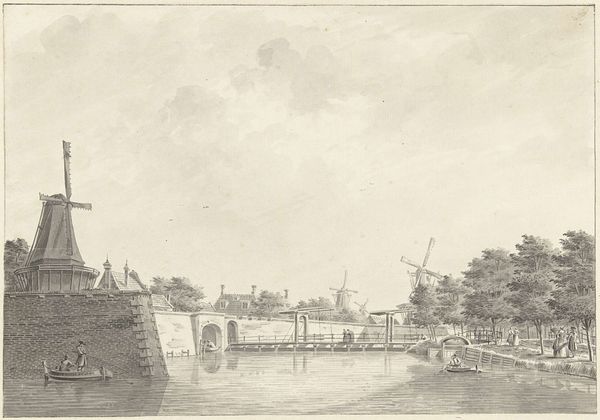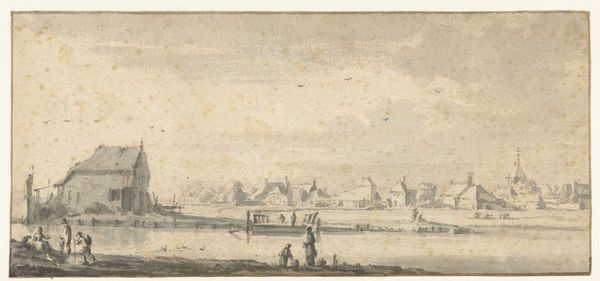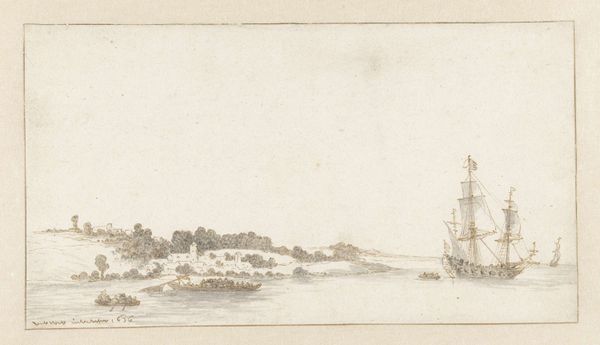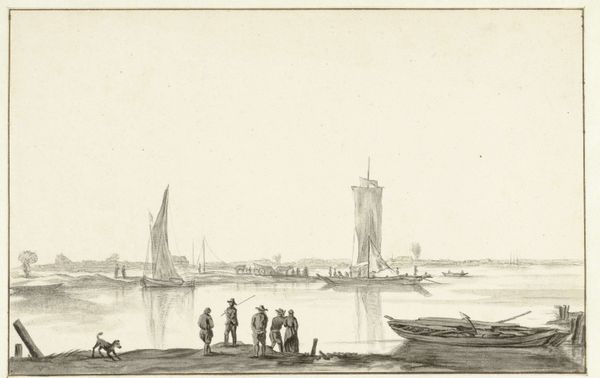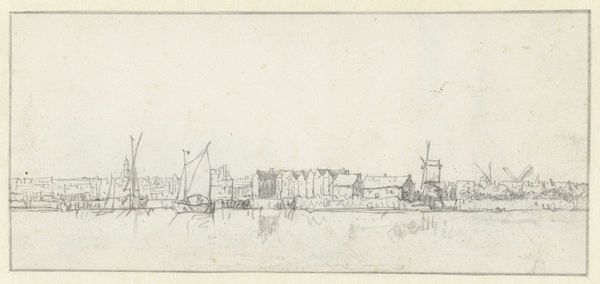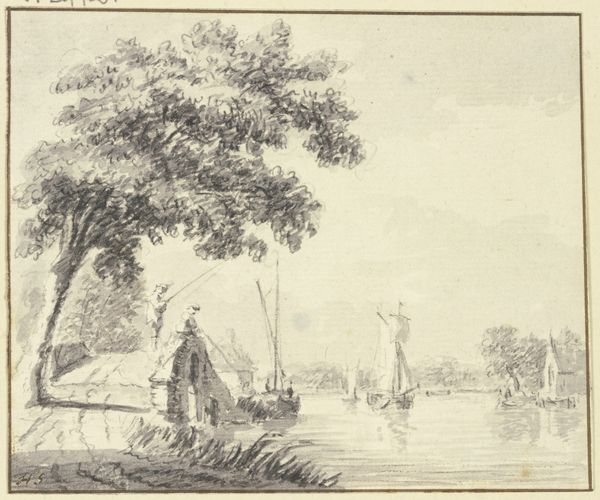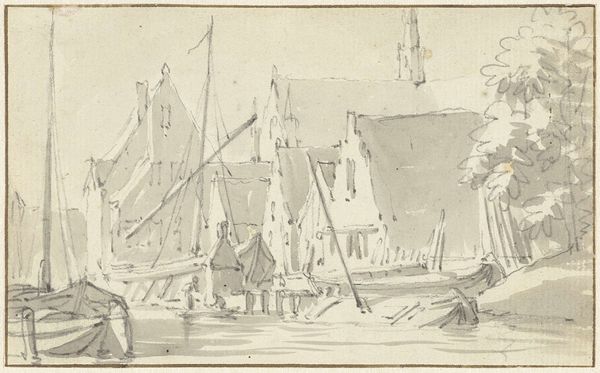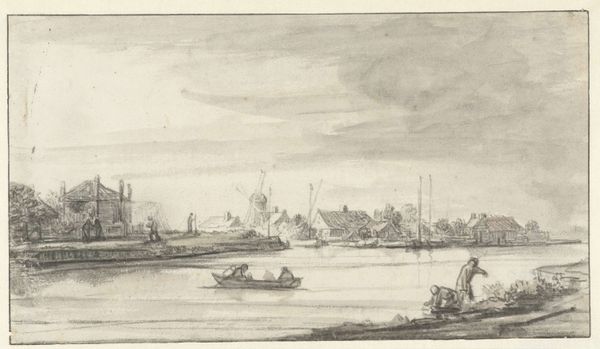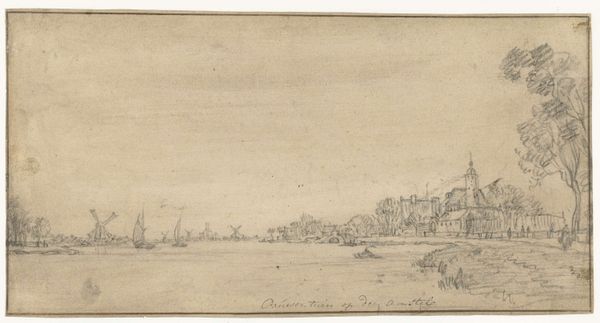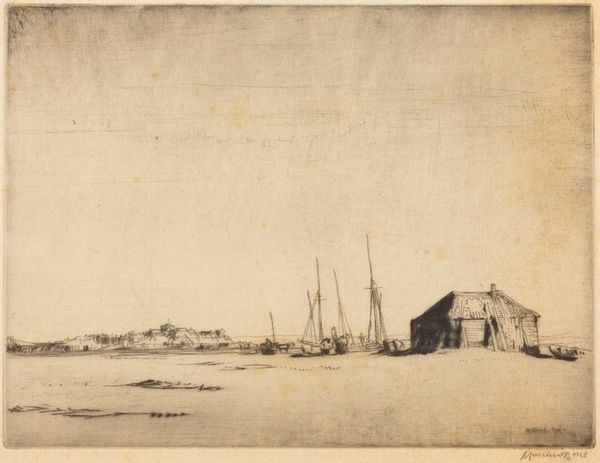
drawing, paper, pencil
#
drawing
#
dutch-golden-age
#
pencil sketch
#
landscape
#
paper
#
pencil
#
cityscape
Dimensions: height 130 mm, width 215 mm
Copyright: Rijks Museum: Open Domain
Editor: This drawing, “Rivierlandschap,” created sometime between 1630 and 1676 by Hendrick Jacobsz. Dubbels, is rendered in pencil on paper. I'm struck by how muted and quiet the scene is. What elements stand out to you in this piece? Curator: Immediately, the composition establishes a stark horizontal division. The lower register, characterized by dynamic, gestural pencil strokes, suggests the reflective qualities of water. Above, we observe a cityscape, sketched with finer, more controlled lines that depict buildings and boats. Note how the varying densities of pencil shading articulate spatial depth, suggesting atmospheric perspective. Editor: So, you're focusing on how the materials and techniques themselves create meaning? Curator: Precisely. The artist's choice to use a limited tonal range reinforces the serene mood, devoid of strong contrasts. Semiotically, the boats can be read as signifiers of trade and transit, anchoring the scene to a specific socio-economic context of the Dutch Golden Age. But the lack of vibrant colour directs the eye to how line and form interact to construct space. Do you see how the vertical masts bisect the horizontal composition? Editor: Yes, now that you mention it, I notice how the vertical lines of the masts create a kind of counterpoint to the horizontality of the landscape, disrupting what might otherwise be a too-calm composition. Curator: Indeed. The structural relationship between these contrasting elements creates a dynamic tension that sustains visual interest. What was your takeaway from examining this piece more closely? Editor: I appreciate how the artist utilizes the pencil strokes and shading to guide my eyes through the landscape and build meaning beyond just a simple depiction. Thank you.
Comments
No comments
Be the first to comment and join the conversation on the ultimate creative platform.
